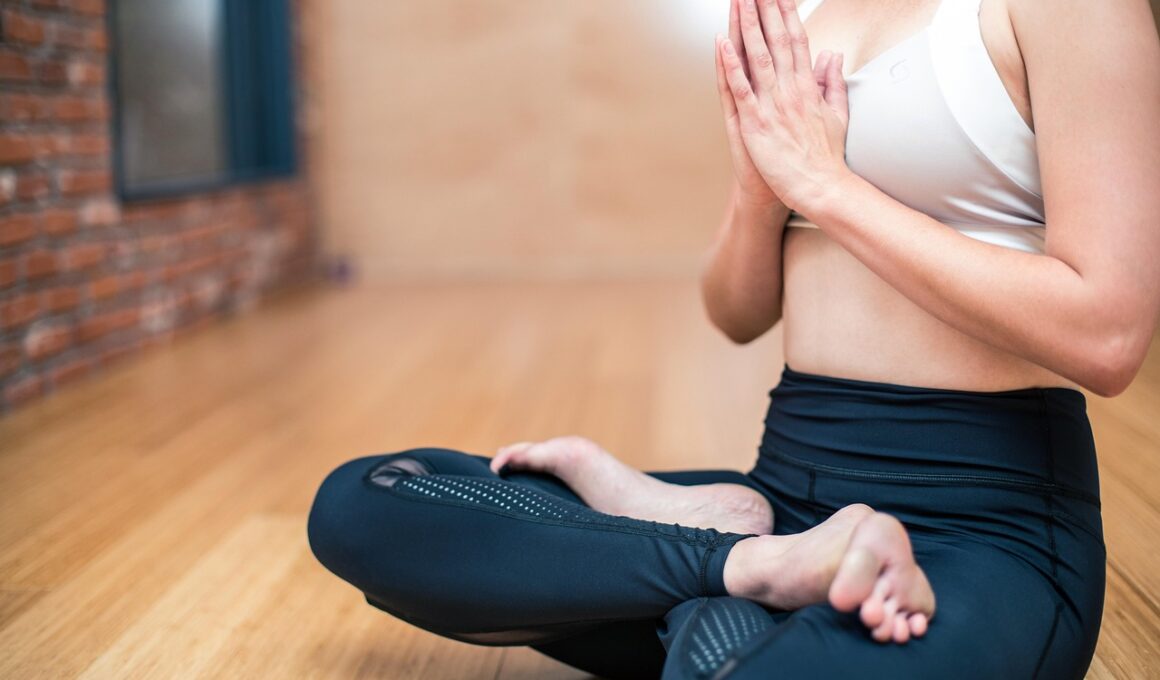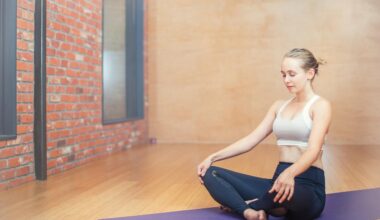The Importance of Flexibility and Mobility in Later Life
As we age, our bodies naturally undergo physical changes that can impact flexibility and mobility. These changes may lead to reduced range of motion, stiffness, and even pain. Therefore, incorporating activities that promote flexibility becomes essential for seniors. It is crucial to understand that flexibility is not only important for overall mobility, but it also plays a significant role in maintaining independence. Many seniors find that they struggle with basic daily tasks because of limited flexibility. Simple actions such as bending down to tie shoes or reaching for items on shelves can become challenging. To combat these issues, seniors should engage in stretching exercises regularly. Stretching can help alleviate discomfort and enhance the range of motion in joints and muscles. Examples include gentle stretches for the back, legs, and arms. Additionally, activities like yoga or tai chi can improve balance and posture, significantly impacting daily life. Therefore, paying attention to flexibility and mobility can foster a more active and fulfilled life, allowing the elderly to engage more fully in social and recreational activities.
In addition to reducing discomfort and improving daily function, enhancing flexibility has emotional and psychological benefits. Exercise, in general, promotes mental well-being, and stretching is no exception. Many older adults experience feelings of isolation or depression due to decreased mobility. Engaging in stretching and gentle mobility exercises fosters a sense of accomplishment and encourages social interaction. Group classes that focus on these activities provide opportunities to connect with peers, forming valuable support systems. Ultimately, this sense of community can significantly enhance an individual’s quality of life. Furthermore, better flexibility reduces the risk of falls, one of the leading concerns for older adults. Falls can lead to serious injuries, including fractures and head trauma. By enhancing flexibility, older adults can improve their balance and coordination, making it less likely that they will fall. Additionally, flexibility training can lead to improved postural alignment, further contributing to stability. Seniors should consult healthcare professionals to develop tailored exercise routines, ensuring they are safe and effective. Overall, prioritizing flexibility and mobility is integral to maintaining a vibrant and active lifestyle for older adults.
Types of Flexibility Exercises
There are various types of flexibility exercises that seniors can incorporate into their routine. Dynamic stretching is a form that involves movement and helps warm up the muscles. This approach can be particularly effective before engaging in physical activities. It is crucial for seniors to engage in gentle dynamic stretches rather than intense ones, as some seniors might not be accustomed to vigorous movements. Examples of dynamic stretches include leg swings and arm circles. On the other hand, static stretching involves holding a stretch in a specific position for a prolonged period. This type can be beneficial after exercises, providing relief to tired muscles and promoting recovery. Seniors may perform static stretches for major muscle groups like the hamstrings, calves, and shoulders. Another advantageous option is proprioceptive neuromuscular facilitation (PNF) stretching, which combines stretching with muscle contraction and relaxation. It is essential to listen to the body during any flexibility routine and avoid forcing any movements. Flexibility training should be tailored to the individual’s capabilities, starting slowly and progressing gradually for the best outcomes.
In addition to traditional stretching exercises, engaging in mind-body practices has been found effective at enhancing flexibility and mobility in older adults. Activities like yoga and Pilates offer an excellent blend of strength, flexibility, balance, and mindfulness, benefiting both the body and mind. Many seniors find that they can safely participate in these exercises without prior experience. Yoga, in particular, emphasizes controlled movements and breathing techniques, allowing participants to focus on their bodies and develop awareness of their limits. Participation in group classes can motivate and inspire seniors to remain consistent. Pilates, on the other hand, focuses on core strength, which is essential for stabilizing the body during various activities. Regular attendance in yoga or Pilates classes can lead to notable improvements in flexibility, balance, posture, and strength. Additionally, both of these practices encourage relaxation and stress relief, leading to improved overall mental health. Therefore, older adults should consider incorporating these classes into their weekly routines to simultaneously improve flexibility, mobility, and overall well-being.
Creating a Daily Routine
Establishing a regular daily routine that includes flexibility and mobility exercises is vital for seniors. Consistency is key to reaping the benefits of any exercise regimen. Seniors should aim to incorporate flexibility training into their daily lives realistically. A 15- to 30-minute session on most days can lead to noticeable improvements over time. It can be helpful to schedule these sessions at a specific time to create a habit. Furthermore, setting personal goals can provide motivation and a sense of achievement, making the routine more enjoyable. Seniors should also employ various exercises to maintain engagement over time. This approach can prevent boredom and increase adherence to the routine. They may opt for a combination of stretching, yoga, and balance activities. Additionally, it is crucial to listen to the body, making modifications as necessary. Engaging a family member or friend in these exercises can also help by providing support and companionship. Regular check-ins with healthcare providers can help assess progress and ensure that the chosen exercises remain appropriate for their level of fitness.
Another factor in the success of maintaining flexibility and mobility is the use of appropriate equipment. There are various tools available that can assist seniors in their flexibility training. For instance, struggle-free stretching can be facilitated with resistance bands, which can target specific muscle groups. These bands enable individuals to gently stretch muscles and improve flexibility. Additionally, it may prove beneficial for seniors to use foam rollers or massage balls to alleviate tension in tight muscles, promoting relaxation and flexibility. Water-based exercises, such as swimming or water aerobics, reduce the impact on joints while enhancing flexibility and mobility. These activities can often feel easier thanks to the buoyancy of water and can be enjoyable. When considering the right equipment, seniors should focus on what feels comfortable and safe for them. Local community centers or gyms may offer classes that utilize some of this equipment, providing guidance. By choosing appropriate tools, older adults can create a conducive environment for improving their flexibility and mobility, ensuring lasting benefits.
Conclusion
In conclusion, the importance of flexibility and mobility in later life cannot be overstated. These aspects are essential for maintaining overall independence and quality of life among seniors. Regularly incorporating flexibility training—through stretching, yoga, or other exercises—can lead to profound benefits both physically and mentally. For older adults, maintaining an active routine fosters engagement, social connectivity, and a sense of accomplishment. Older adults should seek to tailor their flexibility routines to suit their individual needs, emphasizing safety and gradual progression. The relationship between flexibility and fall prevention also presents a compelling argument for regular practice. Moreover, finding joy and fulfillment through movement can significantly enhance their well-being. As individuals continue to age, prioritizing flexibility and mobility cannot be overlooked. It is essential for older adults to enlist the help of healthcare professionals or fitness instructors to design personalized plans that promote safety and effective training. Ultimately, the journey to better flexibility can lead to increased self-reliance and a more active lifestyle, allowing seniors to enjoy the richness of life.


